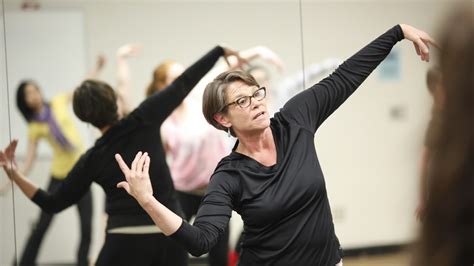Are you passionate about dance and interested in pursuing a career that combines movement with therapy? If so, you may find the field of dance therapy to be a rewarding and fulfilling path to explore. In this blog post, we will delve into the world of dance therapy, examining its role as a healing art and the various benefits it offers for mental health. From promoting emotional expression to aiding in rehabilitation, dance therapy has the potential to create positive and transformative experiences for individuals of all ages and backgrounds. We will also discuss the necessary education and training required to become a dance therapist, as well as the diverse career pathways available in this field. Additionally, we will explore real-life case studies and address ethical considerations and challenges. Join us as we shine a light on the therapeutic power of movement and advocate for the importance of dance therapy in promoting holistic well-being.
Table of Contents
Understanding Dance Therapy as a Healing Art
Dance therapy, also known as dance movement therapy, is a form of psychotherapy that uses movement and dance to support intellectual, emotional, and motor functions of the body. It is a unique form of therapy that focuses on the connection between the mind and body, allowing individuals to explore their emotions and express themselves through movement.
Dance therapy has been found to be beneficial for individuals of all ages, from young children to the elderly. It can be used to address a wide range of mental health concerns, including anxiety, depression, trauma, and eating disorders. By engaging in movement and dance, individuals can tap into their inner emotions, process their experiences, and develop a greater sense of self-awareness.
One of the key principles of dance therapy is the idea that the body and mind are interconnected. Through movement, individuals can release pent-up emotions, improve their mood, and reduce stress. This can have a profound impact on an individual’s overall well-being and mental health.
Overall, dance therapy is a powerful form of healing art that has the potential to bring about positive changes in the lives of individuals struggling with mental health challenges. It provides a safe and supportive space for individuals to explore their emotions, express themselves creatively, and develop a deeper connection with their own bodies.
Exploring the Benefits of Movement on Mental Health
Dance therapy, also known as movement therapy, has been increasingly recognized for its positive impact on mental health. The incorporation of physical movement in therapy sessions has been shown to have a multitude of benefits for individuals struggling with mental health issues. Not only does movement therapy provide a non-verbal outlet for emotional expression, but it also facilitates stress reduction and improves overall well-being.
Engaging in movement helps individuals connect with their bodies and emotions, ultimately leading to greater self-awareness and self-esteem. This form of therapy encourages participants to express themselves creatively, fostering a sense of empowerment and agency in their mental health journey.
Furthermore, the physical exertion involved in dance therapy leads to the release of endorphins, which are known to alleviate symptoms of depression and anxiety. This natural mood-boosting effect can significantly enhance the mental and emotional well-being of individuals undergoing movement therapy.
Overall, the incorporation of movement in therapy has emerged as a valuable tool in promoting mental health and well-being, offering individuals an innovative and effective means of self-exploration and healing.
How Dance Therapy Helps Promote Emotional Expression
Dance therapy, also known as movement therapy, is a unique form of psychotherapy that utilizes movement and dance to support the emotional, cognitive, physical, and social integration of an individual. Through the use of dance and movement, individuals can tap into their inner emotions, express themselves, and explore their thoughts and feelings in a non-verbal way. This can be particularly beneficial for individuals who struggle with communicating their emotions verbally.
By engaging in dance therapy, individuals are able to explore and express their emotions in a safe and supportive environment. The expressive and creative nature of dance allows individuals to communicate and process their feelings and experiences. This can be especially advantageous for individuals who have experienced trauma or have difficulty expressing their emotions through traditional talk therapy.
Furthermore, dance therapy provides a unique opportunity for individuals to connect with their bodies and gain a deeper understanding of their physical sensations and movements. This mind-body connection can help individuals become more in tune with their emotions and develop a greater sense of self-awareness, ultimately leading to enhanced emotional expression and regulation.
In addition to promoting emotional expression, dance therapy can also help individuals build confidence, improve self-esteem, and develop a greater sense of empowerment. Through the exploration of movement and dance, individuals can gain a newfound sense of agency and control over their emotions, leading to increased emotional well-being and resilience.
The Role of Dance Therapy in Rehabilitation
Dance therapy, also known as dance movement therapy, is a type of expressive therapy that involves the use of movement and dance to support intellectual, emotional, and motor functions of the body. It has been found to be particularly beneficial in the rehabilitation process for individuals recovering from physical injuries, surgeries, or those living with chronic pain conditions.
By engaging in dance therapy, individuals are able to work on their motor skills, coordination, balance, and muscle strength, all of which are essential components of the rehabilitation process. The therapeutic movement also provides a creative outlet for individuals to express their emotions and reduce stress, which can often be a barrier to physical healing.
In addition to the physical benefits, dance therapy in rehabilitation can also serve as a form of social support, providing individuals with a sense of community, connection, and belonging as they work towards their recovery goals. This holistic approach to healing can have a profound impact on an individual’s overall well-being and their ability to navigate the physical and emotional challenges of rehabilitation.
Overall, the role of dance therapy in rehabilitation is multifaceted, addressing the physical, emotional, and social aspects of recovery. By incorporating movement and dance into the rehabilitation process, individuals are able to harness the power of creative expression, community support, and physical rehabilitation to work towards their recovery goals.
Building a Strong Foundation: Education and Training for Dance Therapy
Dance therapy, also known as movement therapy, is a healing art that has gained recognition for its ability to promote emotional, mental, and physical well-being. For those looking to pursue a career in this field, it is essential to build a strong foundation through proper education and training.
Education and training for dance therapy require a multidisciplinary approach, encompassing knowledge in psychology, anatomy, physiology, and dance/movement techniques. This comprehensive understanding allows future dance therapists to address the diverse needs of their clients and facilitate effective healing through movement.
Prospective dance therapists can pursue a variety of educational pathways, including undergraduate and graduate programs specifically tailored to dance/movement therapy. Additionally, obtaining certifications from reputable organizations such as the American Dance Therapy Association (ADTA) further solidifies a therapist’s training and expertise in the field.
Continuous education and training are crucial for dance therapists to stay updated on the latest research, techniques, and ethical considerations. By establishing a strong foundation in education and training, dance therapists are not only equipped to provide quality care but also contribute to the advancement and advocacy of dance therapy as a recognized form of healing.
Navigating Career Pathways in Dance Therapy
Dance therapy is a growing field that offers a unique and rewarding career path for those interested in combining the art of dance with the science of therapy. Professionals in this field have the opportunity to work with a diverse range of clients, using movement and dance as a means of promoting healing and overall well-being.
Those interested in pursuing a career in dance therapy have a variety of pathways to consider. One option is to pursue a degree in psychology or counseling, with a focus on dance therapy. Another route is to obtain a degree in dance or movement studies, and then pursue additional training in dance therapy through a certification program.
After completing the required education and training, dance therapists can explore a range of career opportunities. They may choose to work in clinical settings, such as hospitals, rehabilitation centers, or mental health facilities. Alternatively, they may work in community-based settings, such as schools, community centers, or private practice.
Regardless of the specific career path chosen, dance therapists play a crucial role in helping individuals explore and express their emotions, develop new coping skills, and enhance their overall mental and emotional well-being. As the field of dance therapy continues to grow, there are increasing opportunities for those interested in pursuing a career that combines their passion for dance with the desire to make a positive impact on the lives of others.
Creating Safe and Inclusive Spaces for Dance Therapy Sessions
Dance therapy is a powerful form of healing that can have incredible benefits for individuals struggling with mental health issues. In order to fully maximize these benefits, it is essential to create safe and inclusive spaces for dance therapy sessions. These spaces should be welcoming to individuals of all backgrounds and abilities, and should prioritize the physical and emotional safety of participants.
One of the key aspects of creating a safe and inclusive space for dance therapy sessions is ensuring that the environment is free from judgment and discrimination. Participants should feel comfortable expressing themselves through movement, and should not fear being stigmatized or ridiculed for their actions. This can be achieved through open and honest communication, as well as the establishment of clear boundaries and expectations for behavior within the space.
Another important factor in creating a safe and inclusive space for dance therapy sessions is ensuring that the physical environment is accessible to all participants. This may involve making accommodations for individuals with physical disabilities, as well as considering the specific needs of individuals with sensory or cognitive impairments. In doing so, we can ensure that everyone has the opportunity to fully participate and benefit from the therapeutic experience.
Overall, creating safe and inclusive spaces for dance therapy sessions is crucial for providing a nurturing and supportive environment in which individuals can explore their emotions and experiences through movement. By prioritizing safety, inclusivity, and accessibility, we can ensure that everyone has the opportunity to benefit from the transformative power of dance therapy.
Case Studies: Real-life Examples of Dance Therapy Success
One real-life example of the success of dance therapy is the case of a young girl who had experienced trauma and was struggling with severe anxiety. Through engaging in dance therapy sessions, she was able to express her emotions and work through her trauma in a safe and supportive environment. Over time, she developed a greater sense of self-confidence and reduced her anxiety levels significantly.
Another case study that demonstrates the effectiveness of dance therapy is the story of a military veteran who was dealing with post-traumatic stress disorder (PTSD). By participating in dance therapy sessions, he was able to manage his symptoms and improve his overall well-being. The movement and expression allowed him to process his experiences and reconnect with his body in a positive way.
Furthermore, there is the case of a young adult with autism spectrum disorder who struggled with social interaction and communication. Through dance therapy, they were able to improve their social skills, express themselves non-verbally, and build connections with others in the group setting. This individual experienced significant improvements in their overall quality of life through the power of movement and expression.
Lastly, a particularly inspiring case involves a stroke survivor who had lost mobility and struggled with depression. Through dedicated dance therapy sessions, this individual was able to regain strength, mobility, and a renewed sense of joy and purpose. The combination of physical movement and emotional expression proved to be transformative in their rehabilitation journey.
Addressing Challenges and Ethical Considerations in Dance Therapy
Addressing Challenges and Ethical Considerations in Dance Therapy
Dance therapy is a valuable and effective form of treatment for individuals facing a variety of mental and emotional challenges. However, as with any therapeutic practice, there are certain challenges and ethical considerations that must be addressed in order to ensure the well-being of both the client and the therapist.
One of the primary challenges in dance therapy is maintaining a balance between providing a safe and supportive space for clients to express themselves, while also ensuring that their physical and emotional boundaries are respected. This requires therapists to be acutely aware of their client’s body language and verbal cues, and to consistently check in with them to ensure they are comfortable and feel secure in the therapeutic setting.
Another important ethical consideration in dance therapy is the issue of confidentiality. Clients must be able to trust that their personal experiences and emotions will not be shared outside of the therapeutic setting without their explicit consent. Dance therapists must take great care to uphold their client’s privacy and to create an environment of trust and confidentiality.
Furthermore, dance therapists must also be mindful of their own personal biases and limitations. It is essential for therapists to continually engage in self-reflection and to seek out supervision and support when facing difficult or challenging cases. Additionally, therapists must be aware of their own cultural competence and sensitivity to the diverse backgrounds and experiences of their clients.
Promoting Awareness and Advocacy for Dance Therapy
Dance therapy, also known as movement therapy, is a unique and powerful form of therapy that incorporates the use of movement and dance to support the emotional, cognitive, physical, and social integration of individuals.
By raising awareness about the benefits of dance therapy, we can advocate for its integration into mainstream mental health and wellness practices, and ensure that more individuals have access to this transformative form of therapy.
One of the ways to promote awareness and advocacy for dance therapy is by sharing success stories and case studies that highlight the positive impact it has had on individuals. These real-life examples can help to demonstrate the effectiveness of dance therapy as a healing art and encourage more support for its integration into mental health care.
Furthermore, organizing events, workshops, and educational sessions focused on dance therapy can help to raise awareness among mental health professionals, educators, and the general public about the benefits of this holistic approach to healing. By engaging in advocacy efforts, we can work towards creating a society that values and prioritizes the inclusion of dance therapy in mental health treatment and support services.





